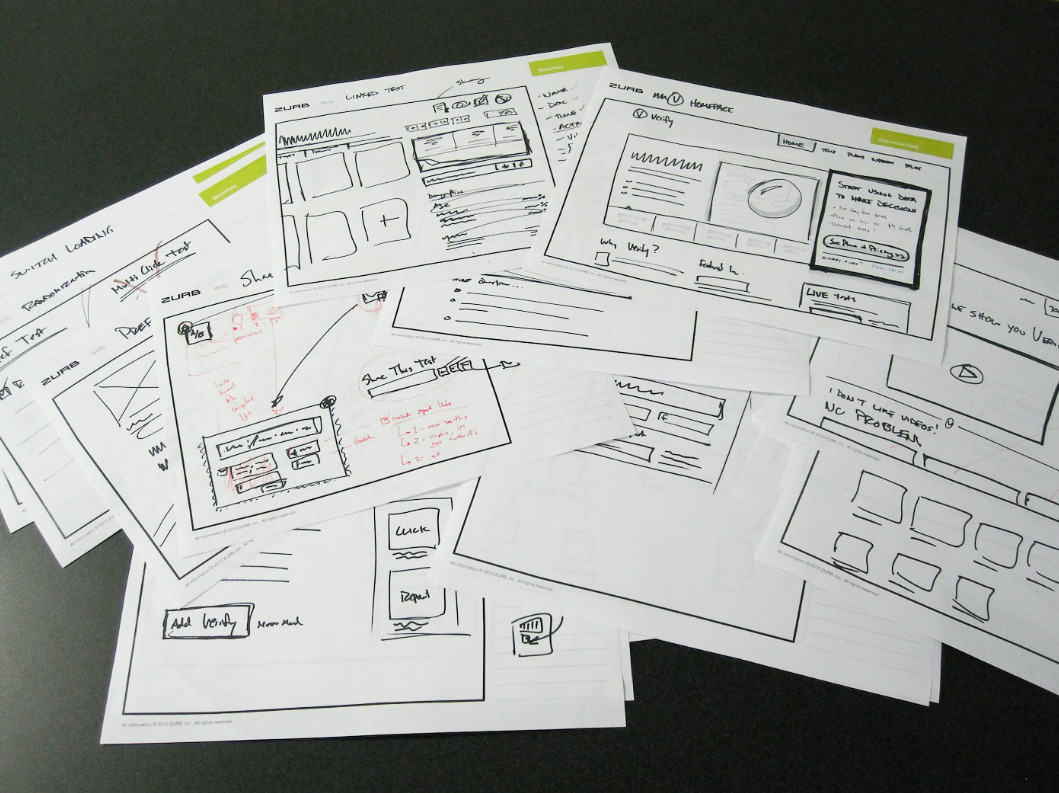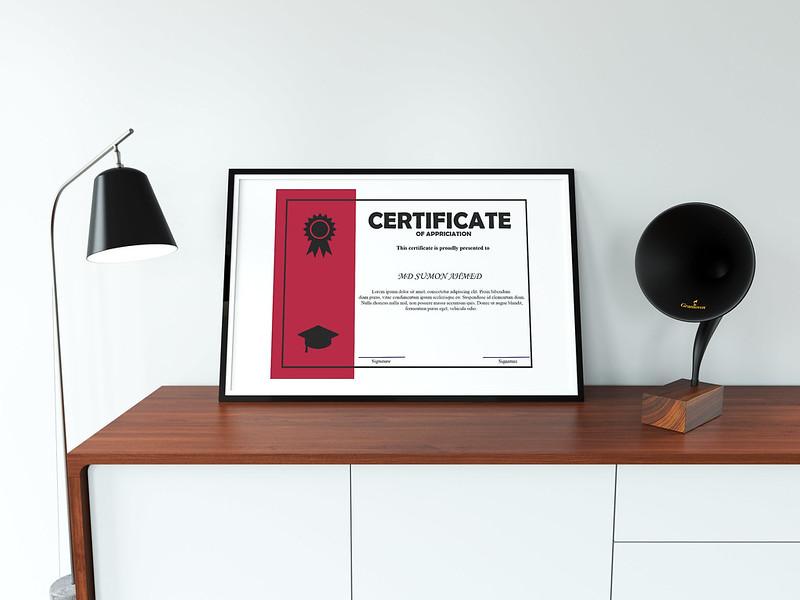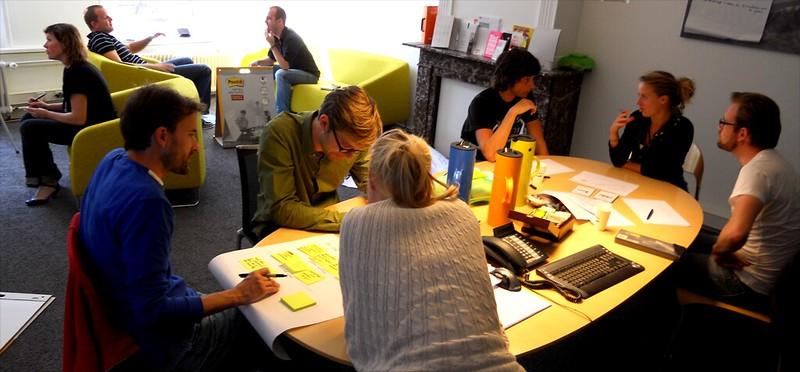If you want to work in a field that needs analytical and creative skills, check out this guide below!
I’ll go into seven steps to get into this career. Besides the career path, through this guide, you will better understand your tasks and benefits when working in this role to know whether to pursue it.
Let’s dive into the route to start this career!
Overview of Interaction Designers
Because the job nature of this career is quite similar to that of a UX/UI designer, many people confuse these roles with each other.
So, before going into the detailed guide, I will share an overview of the job to help you understand it. Let’s check!
Who Is An Interaction Designer?
An interaction designer is an expert who creates intuitive digital interfaces and experiences. These designers focus on crafting how users interact with websites, apps, or products to ensure optimal usability and features.
Unlike UX/UI designers, who have a wide role (handling how a product looks and how users feel when they use it), interaction designers focus on how things function.
Ultimately, their role is to bridge the gap between tech and user needs. They strive to deliver intuitive and efficient interactions in the digital realm.

What Do Interaction Designers Do?
As an interaction designer, my role includes many tasks to create digital experiences as follows:
- Study users and create their profiles. I make detailed descriptions of typical users.
- Plan the layout and decide where everything should go on the screen.
- Make mock-ups by creating pictures and simple models to show how things will work.
- Implement and improve features.
- Stick to design rules and guidelines.
- Test designs with users.
- Listen to feedback and make things better over time.

Requirements For Interaction Designers
To work in this role, you typically need:
- A formal degree: You should have a degree in UX design, visual design, or something related.
- Experience: It’s good to have at least two years of experience in a similar job.
- Design software skills: You must be good with design tools like InVision Studio, Adobe Creative Suite, and Axure.
- Graphic design skills: Understanding drawing, colors, textures, and making things look good is vital.
- Communication and teamwork skills: You should be able to talk to clients and team members.
Work Environment
Interaction designers usually work in offices with tech companies that create apps, products, or websites. They stick to regular office hours during the week but might work longer when projects are big or deadlines are tight.
Besides offices, many designers I know work from home or freelancing. This flexibility allows them to decide how and where they work and collaborate with people from different places, bringing fresh ideas to their projects.
How To Become An Interaction Designer?

Curious about the career path? Without making you wait any longer, I will dive into the steps right now, starting with guiding you in choosing your path and ending with applying for this job.
1. Decide Your Career Path
Choosing your career path is your first big step because it sets the foundation for your professional journey. It determines the path of your expertise and the impact you’ll have. Here are four top career paths in this field:
- Service design focuses on crafting UX across various touchpoints.
- User interaction design focuses on the specific interactions between users and digital interfaces.
- Product design includes the entire process of developing physical or digital products.
- UX design includes interaction design and service design.
To choose the right path, consider what design aspects excite you. Also, reflect on your existing skills and strengths. Different design paths require different skill sets, so aligning your strengths with your choice is vital.
2. Gather Up The Skills

This career requires mastery of many design-related skills and the ability to apply theories to products. So, you need to hone them as soon as possible. Here are the skills you should focus on first in the early stages of this process:
- Design basics and rules: Start by understanding the design fundamentals and study how interactions work in designs. You’ll need to make sketches easy for people to understand.
- Making prototypes: Practice creating interactive models to show how your designs work using InVision or Figma.
- Wireframe creation: Learn how to create wireframes because they help you plan how things should be laid out on a screen before diving into detailed design.
- Coding basics: Depending on your focus, acquire technical skills that suit your area. For example, learn HTML and CSS if you’re into web design. If it’s app design, consider mobile app development.
- Skills in using design tools: Learn to use Adobe Creative Suite, Axure, and similar tools to craft the best visuals.
- Data analysis: Basic data analysis can help you understand user behavior through metrics and analytics.
- Creativity: This career often involves thinking outside the box to create innovative solutions.
3. Get A Degree And Complete A Bootcamp

Regarding degrees, many employers prefer candidates with a formal degree. While some colleges offer specific interaction design programs, don’t worry if yours doesn’t provide this precise major. You can also major in related fields:
- Advertising
- Web design
- Graphic design
If you want to take on leadership roles or specialize further, consider pursuing a Master’s degree because it can give you advanced skills and knowledge.
If you want to start working sooner, a Bootcamp is a quick option focusing on practical skills and job preparation. It teaches you what’s most important for working in this field. Plus, it is faster than formal degree programs.
Or if possible, you can take both a degree formal program and a Bootcamp to get a well-rounded set of skills.
4. Take Programs And Courses With Certifications

After getting your degree and completing a Bootcamp, you should look for certs that dive deep into specific parts of the field, for example:
- IDF cert: IDF offers a range of certifications in design, usability, and user research.
- NN/g UX cert: NN/g provides certifications in UX research and usability.
- HCI cert: It covers various aspects of interaction design and usability.
- CUA: Offered by the UXQB, it focuses on usability and user-centered design.
- CUXP: Also from UXQB, this is a broader cert for pros working in UX and usability.
- CID: It recognizes expertise in design principles and practices.
- CUP: It emphasizes usability evaluation and user research.
- IAAP: It focuses on ensuring digital products are usable by individuals with disabilities.
By adding advanced certifications to your degree and Bootcamp experience, you’ll be well-prepared for complex design tasks and can advance your career confidently.
5. Gain Experiences From Working

Employers appreciate candidates with a lot of practical experience. So, at this step, you should begin looking for entry-level jobs like:
- Junior interaction designer
- UX designer
- UI designer
You can also consider internships or freelance work. If job options are limited, you can work on personal design projects to show your dedication and skills. Remember, learning and gaining experience are the keys to be a skilled designer.
6. Specialize On The Path You Choose
After you have some experience working in this field, the next step is to specialize in your chosen path by looking for advanced courses or workshops that teach you more about it.
Don’t forget to apply what you’ve learned in real projects related to your area because doing actual work helps you become an expert.
In this step, I recommend meeting and talking to people who work in the same area because they might become your colleagues and mentors. You can find them at events or online forums.
Also, you can share what you know by writing blogs and articles or speaking at events. It can establish you as an expert. Trust me, this works for me!

7. Apply For Jobs
When you’re searching for jobs, focus on finding roles that specifically ask for the skills you’re specialized in because these are the roles where you can shine the brightest.
When you apply for these roles, highlight and showcase your expertise in those specific skills. Explain how your skills make you a perfect fit for the job. Remember to share examples of your work or projects showing your proficiency.
In your resume and cover letter, emphasize your skills and experience. Use specific keywords and phrases that directly relate to the job posts. This way, hiring managers can see that you’re not just a generalist but someone who excels in what they need.
During interviews, be ready to dive deep into your abilities, including:
- Your past successes
- Challenges you’ve overcome
- How your skills can benefit the company or project
Competition for these roles can be fierce. So, presenting yourself as a skilled and passionate designer who aligns with the company’s needs and values is vital.
4 Types of Interaction Designer

There are four main types of interaction designers as follows:
- Service designers work on making the whole experience of using a service better. They focus on improving how people interact with a service, both online and offline, to meet users’ needs and business goals.
- User interaction designers design buttons, menus, navigation flows, and other elements to create pleasing user experiences.
- Senior product designers are experienced designers who oversee the design process for products. They work with teams to ensure a product looks good and works well. They also help set the vision for a product.
- Director UX designers: Directors are top-level designers who lead design strategies for a whole company. They work with big teams, set the direction for design, and ensure it matches the company’s goals.
Why Should You Become An Interaction Designer?
This career leads to a stable, well-paying job with different options, and it’s a creative field where you can make a big impact.
- Growing field: The job market for these designers is growing fast, with a 13% increase expected from 2018-2028.
- Diverse jobs: There are many different types of jobs in this field, and the US alone has over 8,700 people working in this role.
- Good pay: On average, interaction designers in 2023 make around $103,000 a year; some earn even more, up to $130,000.
- Creative impact: It’s a creative job where you can solve real problems and shape how people use digital products.
- Global chances: You can find work all over the world, not just in one place.

How Long Does It Take To Work In Interaction Design?
With my 7-step roadmap, this journey can vary from several months with quick training to many years with formal education and real-world practice. It’s a field where you keep learning as you go along.
If you start from scratch, getting a Bachelor’s degree in related fields like graphic design or web design takes about four years.
For a faster option, short training programs can give you basic skills in 2-6 months. It depends on the program and how quickly you learn. If you want to specialize more, add 1-2 more years to your education after the formal degree.
Then, to become really good, you need real-world experience. This stage can take from a few months to several years, depending on the jobs and projects you find.
FAQs
Can Interaction Designers Work From Home?
Yes. These designers can work from home, especially if their job involves digital design and online tools. Since the COVID-19 pandemic, remote work is becoming more common.
Is It Hard To Become An Interaction Designer?
Personally, I find it difficult. It requires a mix of design skills, an understanding of users, and tech knowledge. Success comes with dedication, learning, and building a good portfolio.
Are Interaction Designers In Demand?
Yes. These designers are needed because more companies want designs focused on users. Many jobs are available in different fields.
What Makes A Good Interaction Designer?
A good interaction designer is creative, solves problems, and cares about what users need. They must make easy-to-use designs, work well with others, pay attention to details, learn new things, and stay updated on design trends.
In A Nutshell
This guide on how to become an interaction designer has shown you the steps of getting the job, from education to gaining experience and specializing.
It’s a field with many job options and pays well. So, it’s an exciting and rewarding career choice. Just remember, you need to keep learning and always think about what’s best for the users.
Hopefully, you can have a great career!
